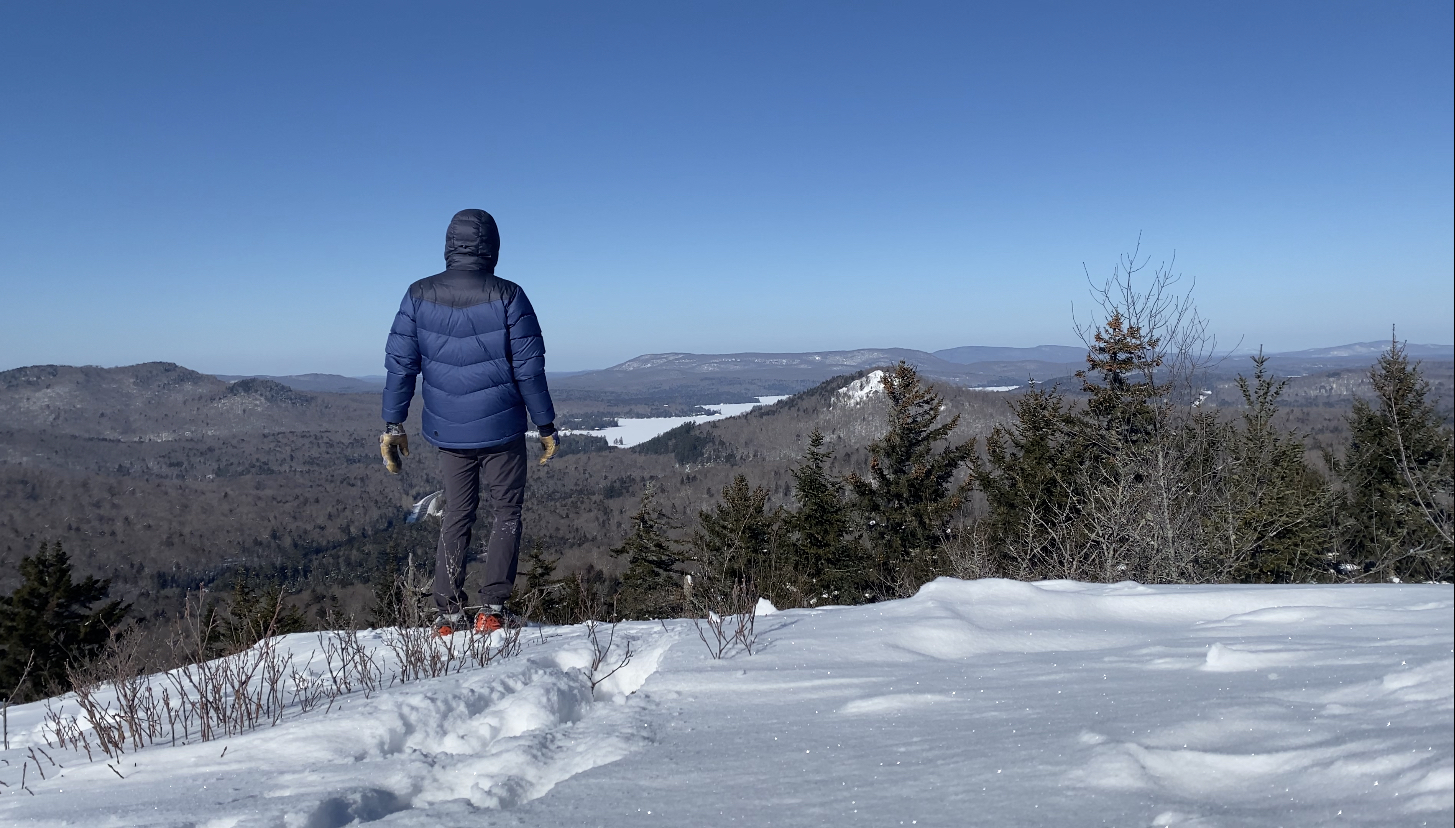
Enough of this “type II fun” business -- let’s have fun now. Despite what your adventure novels might tell you, you don’t have to suffer to enjoy the mountains this winter. There are plenty of good times to be had close to the car and far from danger.
Sure “bigger is better” and all that nonsense, but, in terms of bang for your shivering-buck, the lower peaks are where it’s at. More specifically: the famous Adirondack hiking challenges. So warm up those winter legs, and enjoy some of the best views in the Adirondacks without dragging those pesky snowshoes around the whole day.
The Tupper Lake Triad is the perfect goal to work on your winter hiking skills. Whether you’re practicing for bigger objectives in the future, or you just want to figure out if winter hiking is right for you, these three mountains are a great place to start.

Tips and tricks
Everyone needs a little help sometimes. Here are things to know before getting started:
Be bold! Start cold.
I get it. I always find it hard to pry my glutes from the warm embrace of a car’s seat heaters. That’s especially true when I know I’m going out for a chilly hike. The good news is that as you start to exercise, your body is going to warm up fast. To avoid overheating as soon as you hit the trail, don’t bundle yourself up right away. Let yourself get a little chilly to start, but leave an extra warm layer packed away in your bag for the summit and any stops along the way.
Oh gosh, cover your eyes!
It ain’t the beach, but it sure is bright! Whether you’re dealing with overcast or full sun, make sure to bring along a pair of sunglasses to protect those eyes. A fresh blanket of snow is nice to look at, but it also reflects harsh light back at our eyes. How are you supposed to enjoy those summit views when you’ve gone snowblind?
Get a grip!
Imagine your dream car. You wouldn’t risk crashing that shiny new Lexus because you didn’t put the snow tires on, would you? So, why treat yourself that way? The key to winter hiking is proper traction. When the snow is deep, it’s good to have a wide surface underneath you to avoid sinking in. For this, snowshoes or skis will be your best option. For times when there’s less, or hard packed, snow and ice, microspikes will give you the grip you need.

The mountains
Coney Mountain
Let’s start it off easy. The summit of Coney Mountain offers exceptional views of the Seward and Santanoni ranges in the High Peaks to the east and the entirety of Tupper Lake straight ahead. At 1.1 miles, this trail is just right for getting used to hiking in the snow.

Goodman Mountain
At 1.7 miles, Goodman Mountain is the longest of the Tupper Lake Triad, but its gentle pitch makes it feel more attainable. The trail sweeps around the backside of the mountain, avoiding any steep slopes. This winding trail is well defined, so you’ll have no trouble if you’re the first to get out there after a fresh dose of snow. The summit provides gorgeous views all around. Most notably, a clear day lets you see back across to Coney Mountain. If you’re following the list, you’ll be able to look across the valley to where you stood on the first of the Triad.

Mount Arab
At only one mile long, it may surprise you that this trail gains around 750-feet in elevation! If you’ve followed the list, this peak will be a great way to cap off the Tupper Lake Triad challenge. End off with a stunning view from one of just two fire towers in St. Lawrence County. The toughest of the three mountains, Mount Arab will be well worth your effort.

Grab a patch
After you’ve put in the work, make sure to share your success by applying for the challenge’s patch! Put this on your jacket, pack, or anywhere else to show off that you had what it takes. If you’re looking for more, come back when the snow is gone, and get the summer challenge patch to match!

Celebrate!
No need to be too humble. Bask in your own glory a bit before you rush on to the next challenge. Take the time to sit back and relax, and indulge with a beer from Raquette River Brewing or a victory treat from Washboard Donut Shop.
